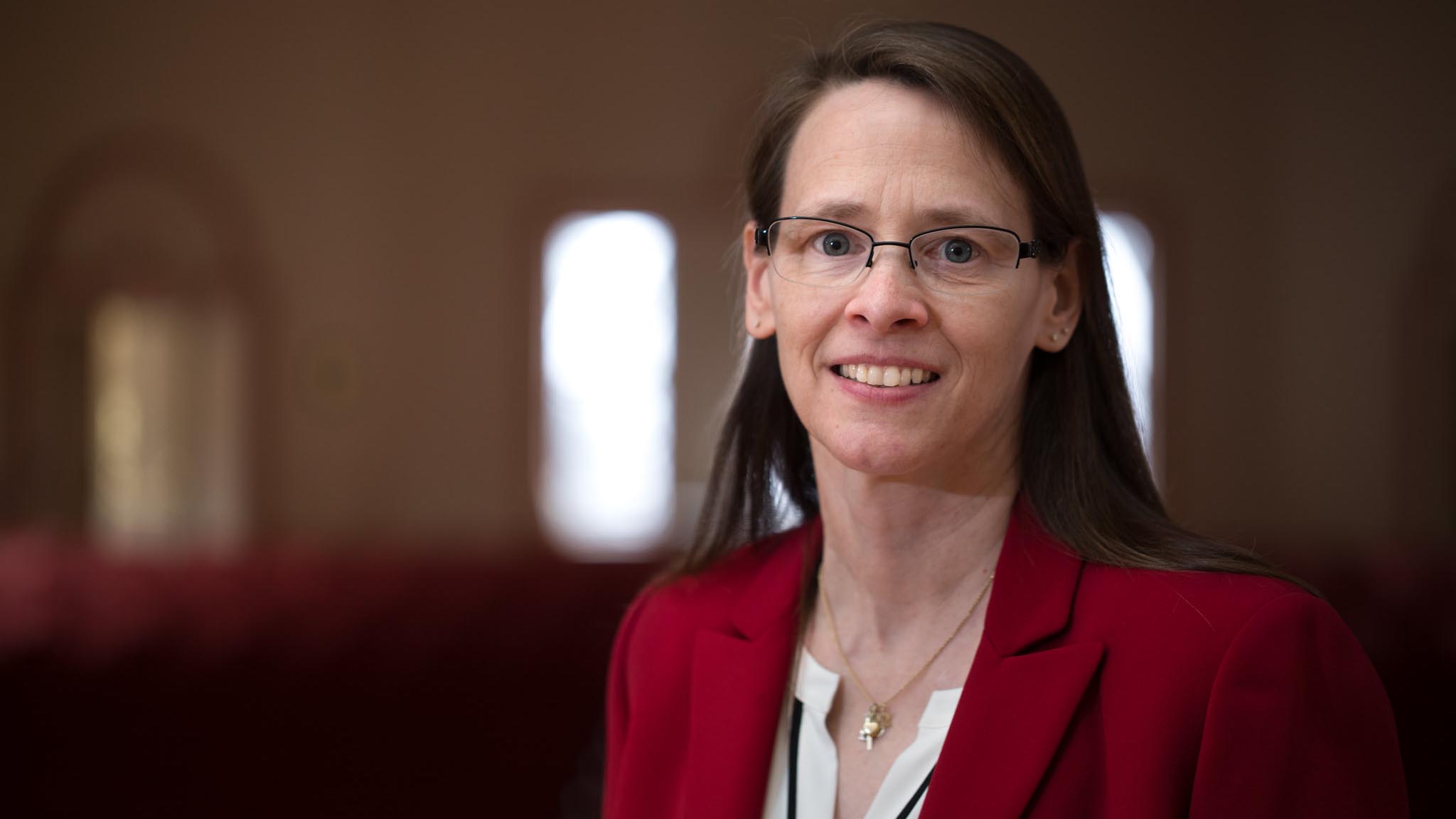Reading specialist master's degree students are conducting a virtual reading clinic.

Dr. Diane Fine
The process of building better literacy skills in elementary school-age children is proving to be educational for the teachers as well as the students at Cal U’s summer reading clinic.
Usually, the session is held on campus for five-and-a-half weeks, three hours per day and is the capstone for students in the University’s reading specialist master’s degree program.
This summer, due to the coronavirus pandemic, the format has changed to a virtual classroom.
And the teachers are learning as much as the students as they develop their virtual-delivery skills.
The 12 Cal U students are working one-on-one with children who are entering first through fifth grades in the fall. The clinic is offered for one hour, three days a week, over a 10-week period. Each reading specialist candidate works one-on-one with a child to conduct and analyze literacy assessments and implement intervention and enrichment lessons to foster strategic thinking and an interest in reading and writing.
“This 6-credit practicum is still where the rubber meets the road,” said Dr. Diane Fine, a professor of childhood education and reading specialist program coordinator. “This is the moment that brings everything together, because they’re working one on one with a student and applying everything they’ve learned.”
The 2020 cohort has, of course, faced their share of challenges beyond the reading specialist program as schools across the country switched to online formats to finish the academic year.
“All of the Cal U students are engaged in some level of teaching right now — some much more experienced than others,” Fine said. “Some just finished their first year as classroom teachers, and oh, what a first year it has been!”
Having the reading clinic in a virtual format this year has helped teachers who face more uncertainty for fall.
“We are not only applying all of our reading specialist skills, but we are also learning about online delivery,” Fine said. “We’ve had bumps in the road, and we are doing a lot of learning ourselves, but we are actively engaged in learning the best ways to create an interactive learning environment.”
On the “not the best way” list: worksheets.
“My pet peeve is worksheets,” Fine said, “no matter what class I’m teaching. Don’t just send them a worksheet where they’re filling in the blanks or picking a, b, c, d. Find a way to make what you’re doing more interactive. We are constantly pushing our students to think outside the box and find engaging tasks.”
Alyssa Loukota earned her bachelor’s degree in early childhood education at Cal U. She just finished her first year as a second-grade teacher in North Carolina, and will be teaching reading to fifth-graders this fall. She is working with a rising third-grader this summer.
“It’s more difficult online, because you can’t rely on tangible items,” she said. “In a classroom, you can use Play-Doh or other things to keep them engaged. I’ve learned that you have to get ‘crafty’ in other ways. You can have them make a ruler and measure items around their house. And you can turn worksheets into something more interactive by incorporating drag-and-drop activities.”
Normal classroom rules also don’t necessarily apply.
“Kids are at home; it’s not a classroom,” Fine said, sharing a story of one boy who did his work while upside down on his couch. “Obviously that wouldn’t happen in a classroom. But he was so engaged!”
The realities of keeping a 6-year-old engaged in virtual learning is why the summer clinic’s hours per week were reduced.
“It’s even challenging for the teachers,” Fine said. “You’re constantly asking your student to look at screen and trying to draw them back. When you’re physically with them, you can easily engage them. When they’re on the computer at their house, there may also be a TV on, or a dog running through the room. Kids get so easily distracted, and that has been our biggest challenge.”
But, should virtual education be necessary in the fall, these are challenges that must be met.
“It is good to work through some of these issues in an environment that is collaborative and supportive,” Fine said. “If we go online in the fall, these are the realities we are going to be facing — we are in people’s houses.”
Learning to be flexible has been a key point for Cal U student Angel Rose, a preschool teacher who earned her undergraduate degree in early childhood education.
“My student is just going into first grade,” she said. “Today he wanted his ‘brain break’ in the first five minutes of starting. I wouldn’t normally do that in a classroom, but I gave him his break, he had a snack, and he was more involved for the rest of the hour. I’m learning to choose my battles.”
Rose also appreciates the support within the reading specialist cohort.
“Some of the M.A.T students who teacher older children were more advanced with technology,” she said. “This whole group is very open and supportive, and you don’t have to feel embarrassed or inadequate or unprofessional if you have a question. It’s a safe place to be honest and ask for help.”
Adds Fine: “We all have to be constantly learning.”
